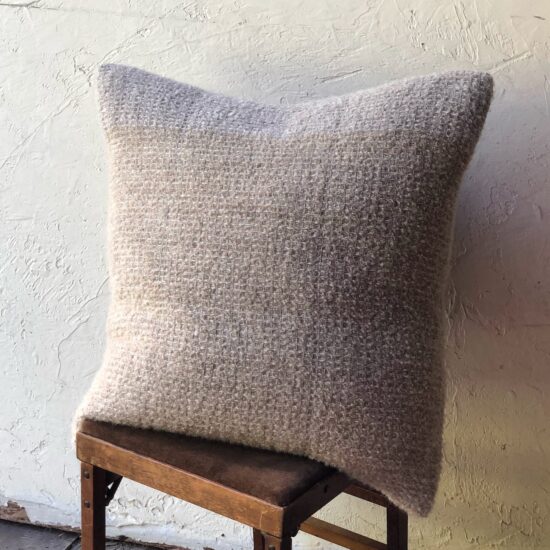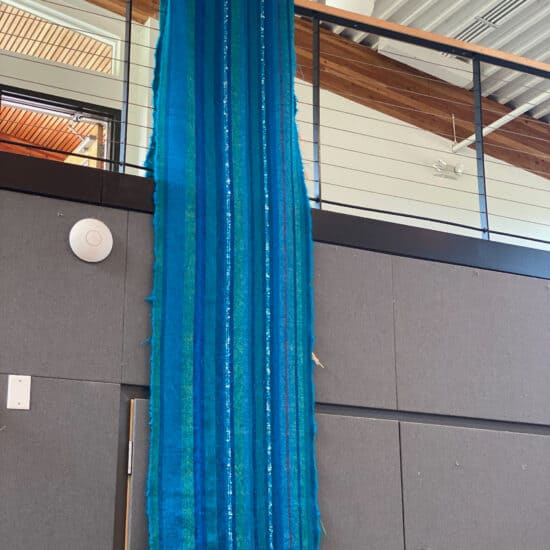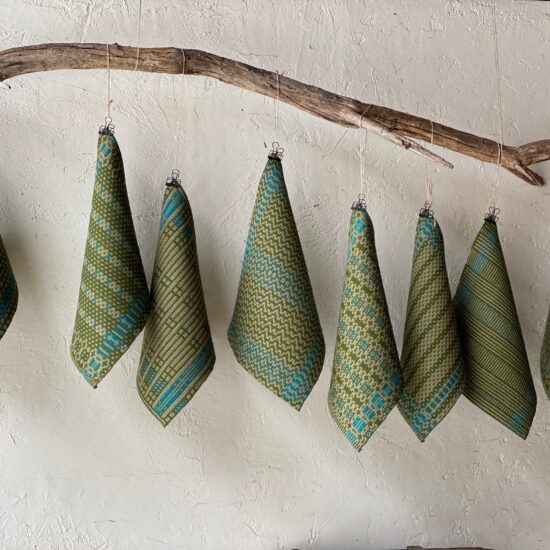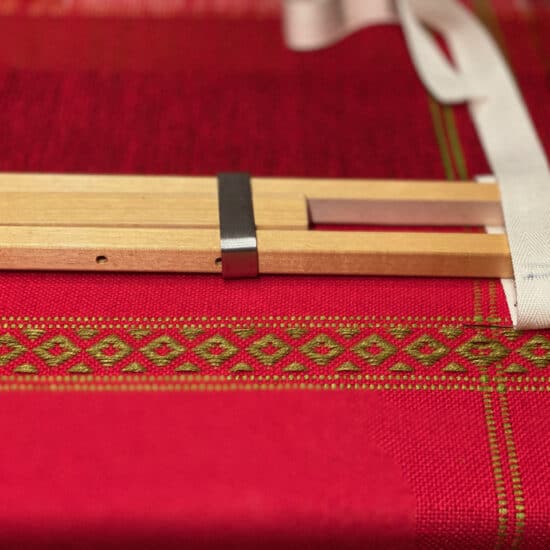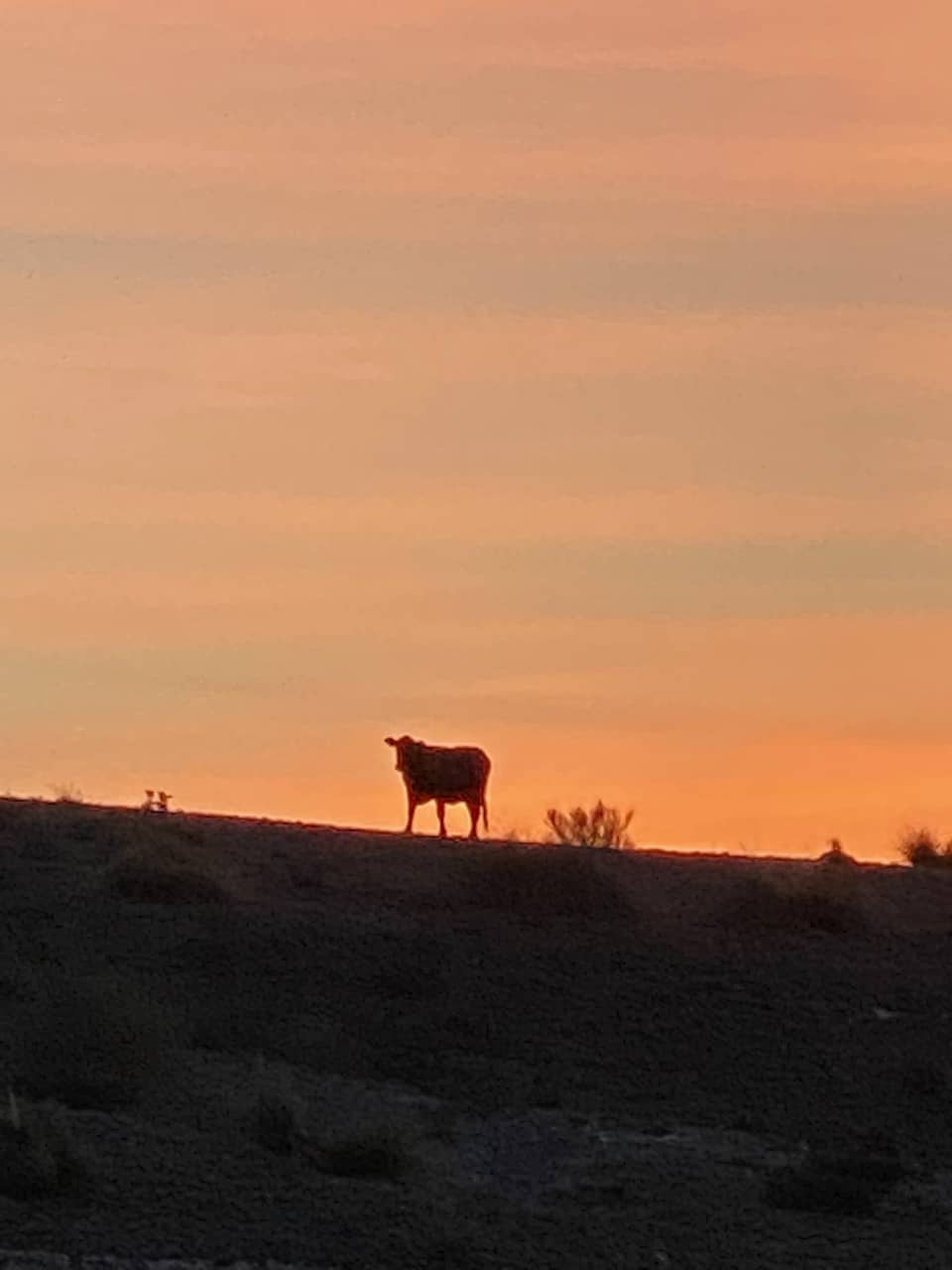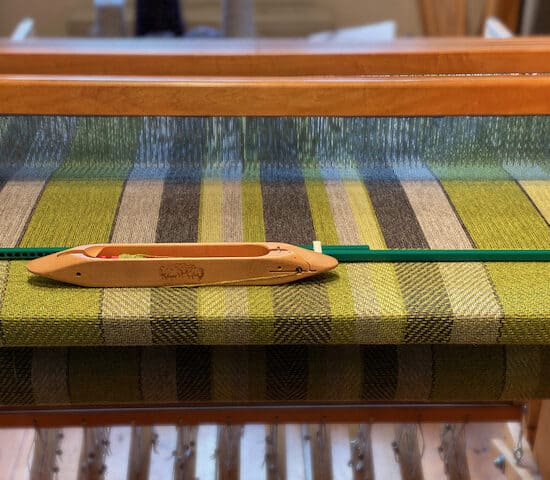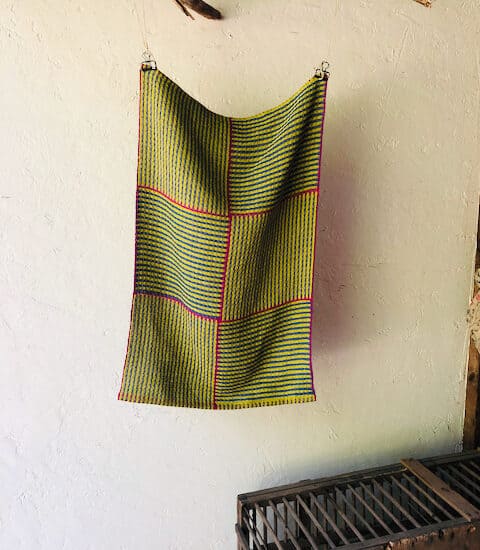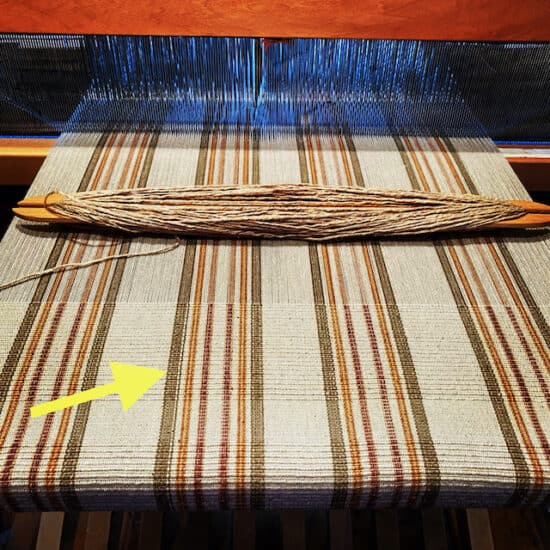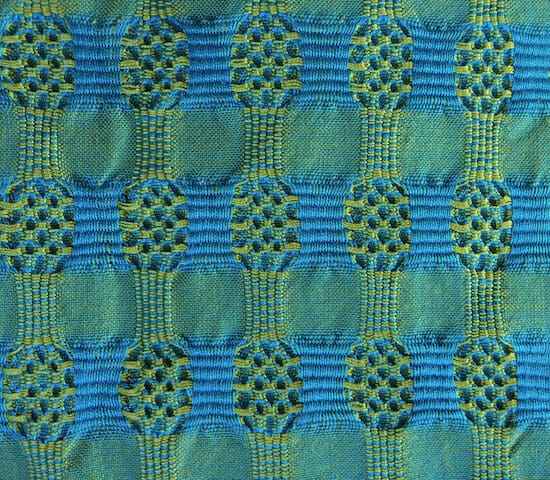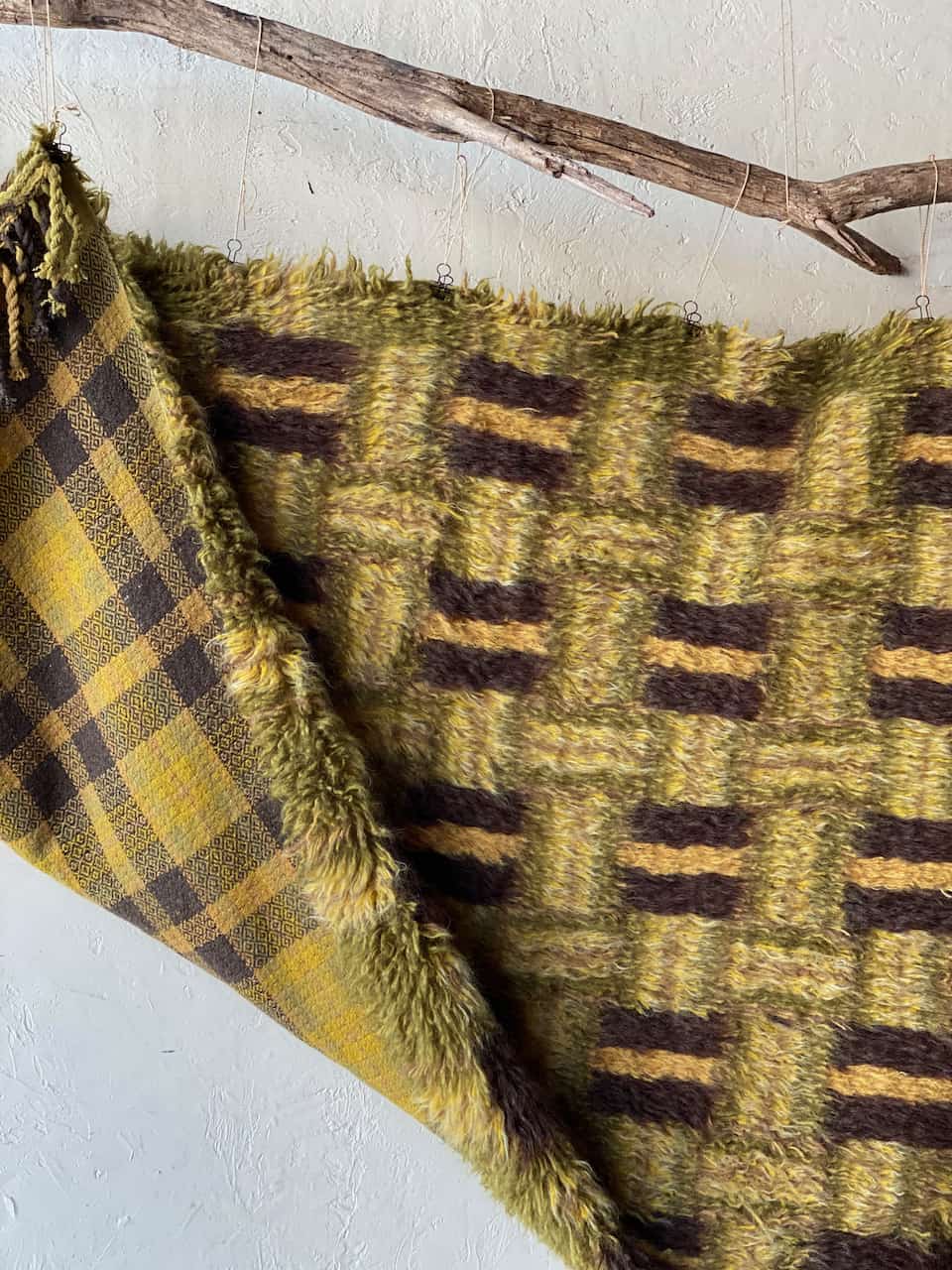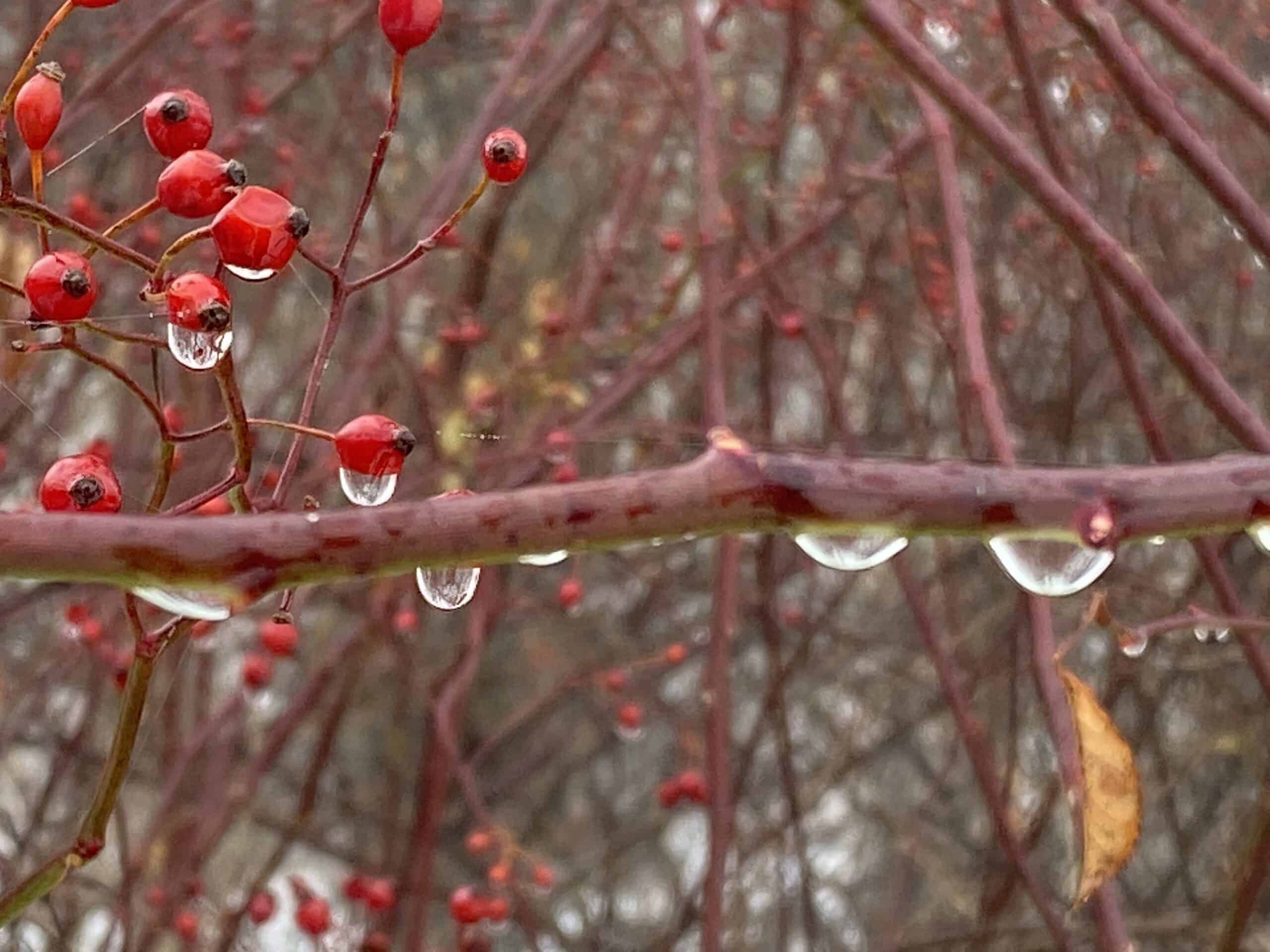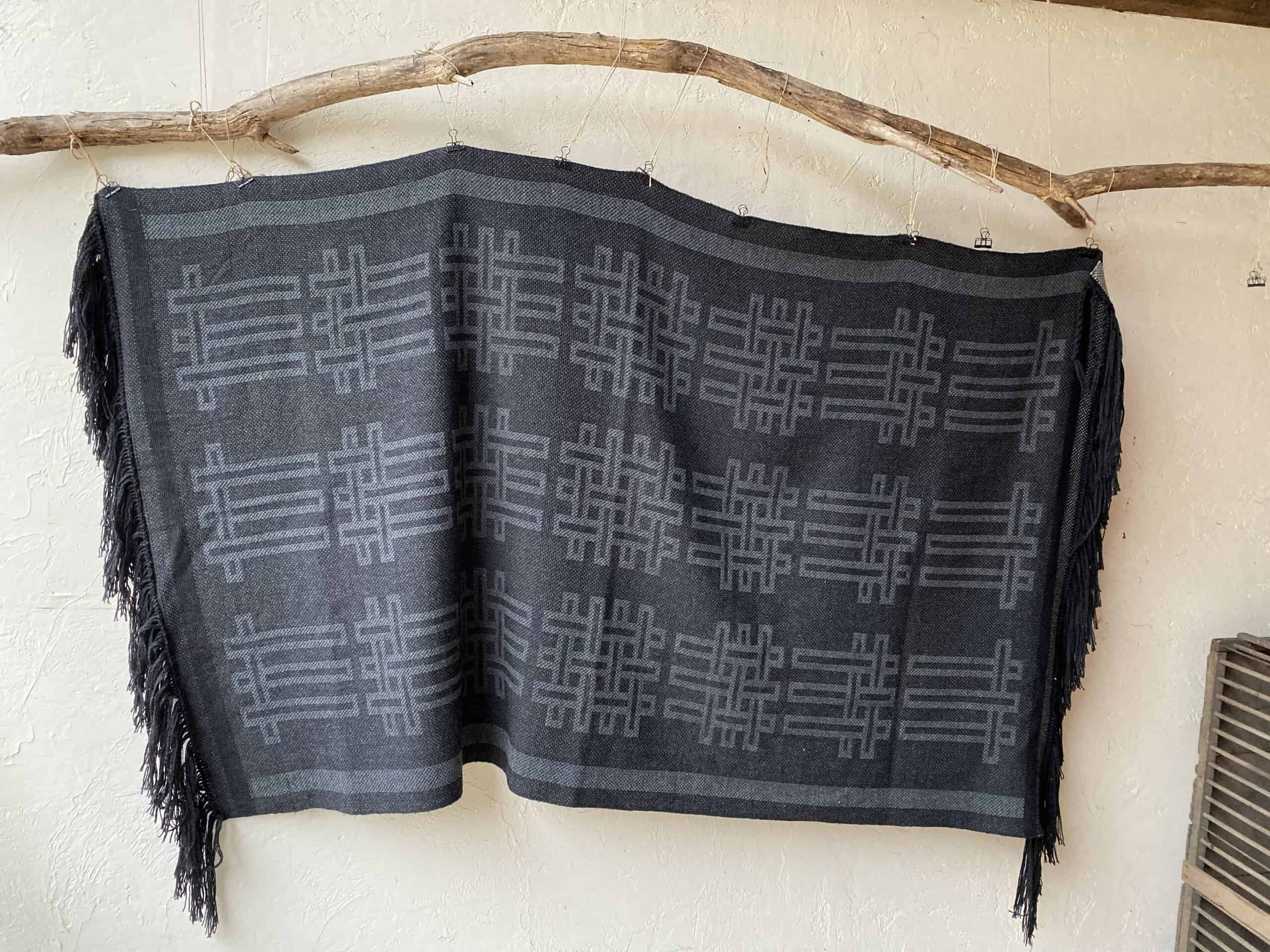Get PlainWeave updates by email
-
Lovely, Lucious, Linen
Hello Weavers, I decided to write a post about linen after overhearing a group of weavers admiring a set of linen napkins, but agreeing with each other that linen is too scary to work with. Iq want to firmly respond "au contraire"! I think that the chatter among weavers about the difficulty and fussiness of linen is often misunderstood, and that if you learn to love linen, it will truly love you back. SO, some true facts about linen or Flax Facts (thank you Wikipedia): Linen is made from flax
-
Trust Exercise
Hello Weavers I have just emerged from planning/teaching a couple of classes that have given me a lot of food for thought. As many of you know, in-class time is a very small (but critical:) part of everything that goes into teaching. From concept to execution, weaving classes consume huge amounts of time. And I am constantly torn between efficient repeats of the old and highly honed favorites where errata in paperwork, class flow and hard questions have been resolved multiple iterations ago, and the new exciting and inevitably rough (yes
-
Don’t Beat Yourself Up!
I have been thinking about "beat" quite a bit lately, and I wanted to share some of my (swirling and contradictory) thoughts and recent experiences. My natural reaction (as a skeptic and contrarian) to the hand-weaving community's obsession with "squaring one's beat" has been, "if that's your bag, go for it." I couldn't really find a burning desire to change my own approach, which up until now has been: find a good sett, get a natural beat for the fabric and eyeball it from there. This approach has taken me
-
Twill Me Now!
Hello Weavers I hope your holiday season is shaping up to be relaxing and filled with good will and kindness. I am happily anticipating the arrival of kiddos with their partners and pets, and am trying to check off as many of the "gonna dos/wanna dos" as I can before the chaotic pile-in commences. I have delayed the first part of my promised Twillogy for months and not only due to procrastination . . . although this quote rings a bell. I think of myself as something of a connoisseur of procrastination, creative and
-
Distracted in the Desert
I apologize for postponing part 1 of my Twillogy post, but I have been on a high desert adventure, away from my studio and distracted by the wondrous sights and sounds of west Texas. “Texas history is a varied, tempestuous, and vast as the state itself. Texas yesterday is unbelievable, but no more incredible than Texas today. Today’s Texas is exhilarating, exasperating, violent, charming, horrible, delightful, alive.” – Edna Ferber
-
Twill or Be Twilled
Hi weavers - I am working on a new pattern for a series of swellegant pillow covers in twill, and serendipitously, while working on the "twillow" pattern, I have been reviewing Becky Ashenden's video series in which she recreates her excellent Basics class (a class she has been teaching at the Vävstuga Swedish Weaving School for 30 years). Twill is covered extensively in the Basics drafting classes, and so twill has been on my mind. The tempting abundance of annoying puns that haunt me when I am thinking of twill
-
I Never Met a Meta(weave) I Didn’t Like
If you are a hand weaver, and you have jumped into the river of winding, beaming, threading, sleying, tying on and tying up in order to swim to the shore of cloth, then I cannot imagine that the notion of "metaweave" doesn't intrigue you. If something about the interlacement of threads drew you to take the dive into the "you mean you have to put all those strings into those little holes" waters, then how could you resist the idea of taking that interlacement and both using it as the
-
Incorrigible-corrigenda
I have to confess that the inspiration for this post may be a little self serving, but I have been wrestling with the idea of errors lately. This is mostly due to the humiliating necessity of sending out corrections (often several) for patterns that I sell on Etsy. I sometimes feel that the errors must be breeding once the patterns are published because I SWEAR they were not there when I went over and over the patterns prior to publishing. This suspicion has led me to want to talk about
-
Honeycomb by Any Other Name is Just as Sweet
I am poised to publish a pattern for Grand Honeycomb pillow shams (awaiting the final eagle-eyed perusal by Véronique Perrot - stellar weaver, colorist and tech editor), and in response to a question from @eroticmacrame on IG, I wanting to talk about Honeycomb. Insert gratuitous pic of Bee Blanket - structurally nothing to do with honeycomb, but couldn't help myself. [caption id="attachment_15559" align="alignnone" width="480"] Bee Blanket woven in Summer & Winter[/caption] Honeycomb isn't really a structure. According to Madelyn van der Hoogt, it is, "a term we use to describe a cloth in which
-
A Big Question
I recently read a IG post by a super accomplished and voluble young weaver lamenting the loss of emphasis on technique in the teaching of weaving in the US. It is implied that this loss of emphasis has been in favor of an emphasis on "art" or perhaps self expression. The question of art vs. craft is one that haunts many craftspeople, and I wanted to write a little about my experience - I say "experience" because I have not studied this topic in a systematic or academic way. [caption id="attachment_15257" align="alignnone"
-
What I Am Thankful for . . . Many Things . . . Among Them . . . the Color Red
I wanted to write a short post to say thanks. There are so many things I am thankful for that it would be a pretty long and tedious post if I listed them all. Of course, you - my weaving community - are high on the list, but I wanted to get a little more specific and give thanks for the color red. Red is a gift in all its incarnations from palest pink to deep chocolate brown. We couldn't have orange or purple without red. Red lets us be delicate
-
A Start
Hello Friends, I hope you all are enduring in health and relative sanity. For me, weaving has been been wonderfully helpful in finding a rhythm and meaning when all familiar patterns and paths have been disrupted. That said, my sister and I were commiserating about how stress levels manifest in the strangest ways these days, and I told her about a recent incident in my household that (comically) illustrates this phenomenon. I had been asked to submit a rigid heddle project or two for Long Thread Media's Little Looms Holiday Edition, and with
-
“I walk (weave) slowly, but I never walk (weave) backward.” Abraham Lincoln
Hi Friends, I sincerely hope you are safe & sane, coping & acclimatizing. My weaving life has dramatically changed since all my classes were cancelled through spring 2021. I have been trying to sort my priorities during this period of uncertainty. One of the things that I regrettably dropped when my teaching schedule was so full was my blog. I missed talking about weaving and spending time trying to commune/communicate beyond posting images on IG. [caption id="attachment_10328" align="alignnone" width="2560"] I only weave backwards sometime.[/caption] So, "back to the blog" is part 1 of
-
Weaving My Way Back • Guest Post by Vishal Vivek
Hello Long Neglected Weaving Pals, I am re-entering the blogosphere after an extended absence with a guest post by Vishal Vivek co-founder of the Hemp foundation. Vishal has asked me to post a very interesting article he wrote about hemp yarn for hand weavers. I am happy to have him, so please take a look: A Primer on the Current Experiments in Handweaving with Hemp There was a time when all hemp fabrics were handwoven. It cannot be any other way since hemp fabrics precede power looms by thousands of years. Hemp is
-
Lost in America
Hello Friends, Remember the days when you would be invited to a friend's house for a dinner party, gladly accept the invitation, and then have to "sing for your supper" by viewing their vacation slides? Well, I'm sorry to say that there is no supper, but (lucky you) with the click of a mouse you can escape. So, I have been fortunate enough to have gone on an inspiring trip this summer, and wanted to share some highlights, but understand completely if you have something else you need to do with your
-
Close to the Edge
The Edge
-
In Memory: William Devereux Klapp, my dad
I have been neglecting my blog again under a big cloud of sadness. After a crazy scramble, I got into San Antonio late Monday, April 16 and my dear, beautiful, talented and kind Papa died the following day. I miss him more everyday. As spring creeps in around here - I keep wanting to show him some tiny, beautiful spring bloom that he would appreciate with me. Papa with his stylish 1940s mama. young artist at work artist at play self portrait Me waking my sleepy dad up with a kiss Papa holding my sister next to
-
If At First You Don’t Succeed, Cry, Cry Again
I have been happily working in my studio for the last couple months, weaving for various projects while teaching Beginning Weaving to a great bunch of soon-to-be-fanatics. The parameters of the projects have pushed me into using some fibers and structures that I haven't often worked with - exciting! and rife with pitfalls, errors and do-overs. One project was successful in structure /yarn combo, but wrong for the color story and had to be rewoven using a different palette. One was a familiar structure but a new singles knitting yarn that
-
WIP(e) Out!
After an unexpected and thorough derailment for most of January, I got back in the studio to start on a couple of deadlined projects. I was happy with my progress until I went in the house for some coffee and noticed the blanket on the big Harrisville which was starting to look pretty dusty. and the huge pile "ready for hemming" next to the rigid heddle loom with 1/3 of a project complete. This was next to the spinning wheel with "almost complete" scarf yardage. Which happened to be around the corner from my inkle
-
Stonier, Nuttier, Cloth-ier
I was comfort watching old episodes of Nigella Lawson's Christmas Cooking Specials thinking that I might be inspired to get into my old holiday baking, wrapping, decorating frenzy (. . . or maybe just watch Nigella do it and weave instead . . .) and she said something that caught my ear. She said that according to the Russian formalists, the purpose of art was to make "stone stonier", and she was (amusingly) applying that principle to toasting nuts, i.e. the purpose of toasting nuts is "to make nuts nuttier".

